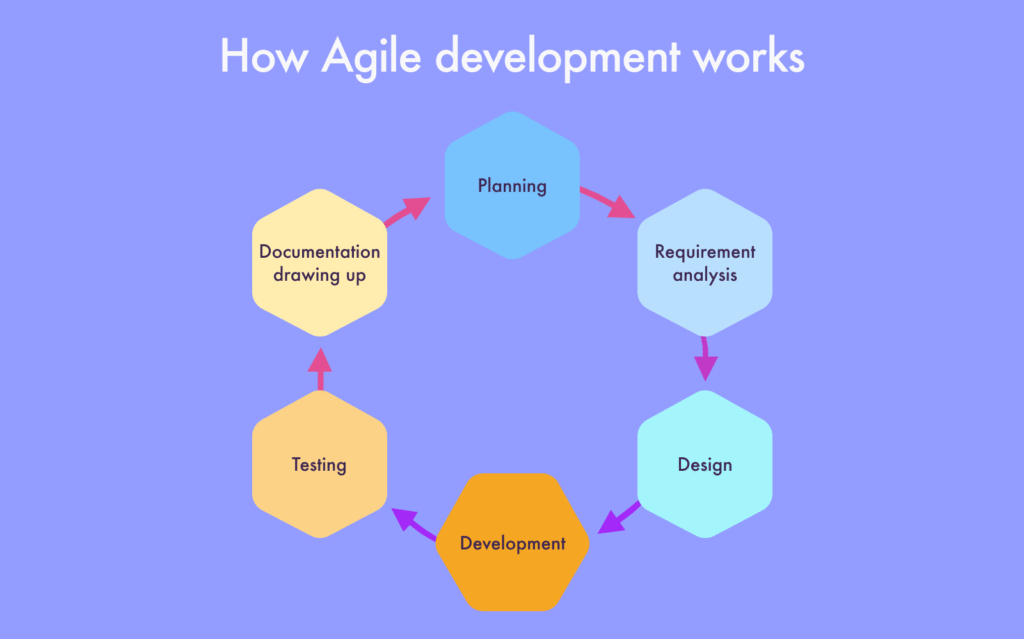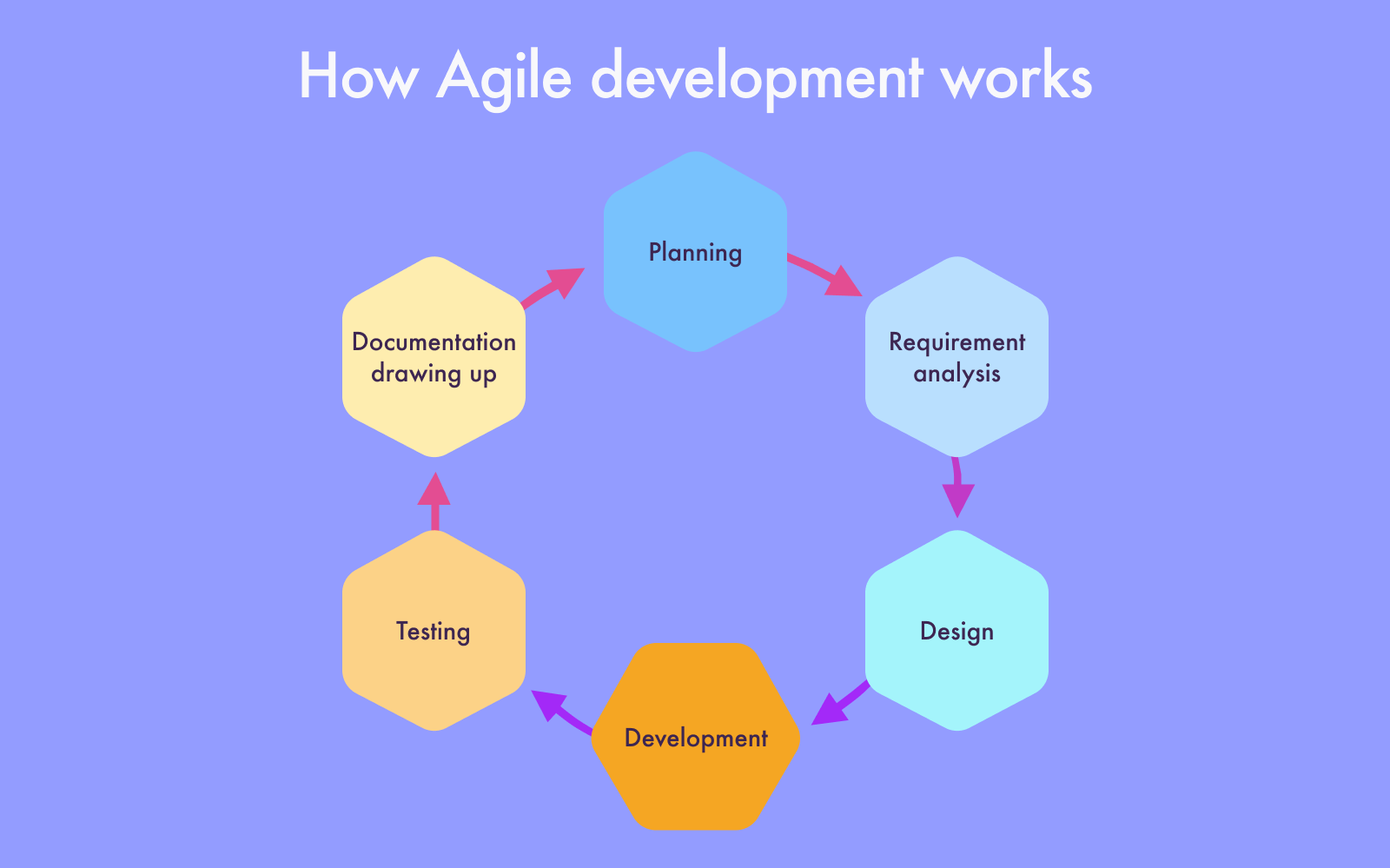In today’s fast-paced, tech-driven world, organizations are under pressure to deliver better results, faster. One proven way to meet this demand is by embracing Agile—a mindset and methodology that empowers businesses to be adaptive, responsive, and customer-focused. Agile has transformed how companies approach project management, team collaboration, product development, and even budgeting.

But Agile in business goes beyond software development. It’s about creating a flexible, iterative culture that drives value through teamwork, feedback, and continuous improvement. In this blog, you’ll learn 9 practical ways to embrace Agile processes, review the benefits of Agile business practices, and understand how to implement the right tools for Agile business growth.
Understand How Agile Really Works
Before applying Agile practices, it’s important to understand what Agile project management truly means. Agile is not about chaos or rushing work—it’s about adapting to change, improving communication, and delivering value continuously.
There are various Agile frameworks such as Scrum, Kanban, Lean, and SAFe. For example, Scrum emphasizes teamwork, time-boxed sprints, and regular feedback loops, while Lean focuses on eliminating waste and maximizing efficiency. Choose the framework that best fits your Agile business model.
Shift to an Agile Mindset
Transitioning to Agile starts with changing your organization’s mindset. Traditional methods like the Waterfall model focus on fixed scopes and long-term planning. In contrast, Agile prioritizes customer collaboration, working solutions, and the ability to adapt to evolving needs.
Leadership must set the tone by fostering a culture that values transparency, experimentation, and quick decision-making. This mindset shift is key to truly embracing Agile.
Know When Agile Works (and When It Doesn’t)
Agile works best in environments where requirements change frequently, customer feedback is crucial, and speed to market matters. It’s ideal for digital transformation, product development, and startups.
However, Agile may not be suitable for projects with fixed, unchangeable scopes, or where compliance requires strict documentation. Understanding these boundaries helps you apply Agile business practices more effectively.
Mix Agile Frameworks for Better Results
One size doesn’t fit all. Successful companies often blend different Agile practices. For instance, some use Scrum for development, Kanban for support teams, and SAFe at the enterprise level.
This hybrid approach allows teams to customize Agile to suit specific workflows, enhancing the scalability and agility of your Agile business model.
Build Cross-Functional Teams
Agile thrives on collaboration. Build cross-functional teams that include developers, testers, designers, marketers, and business analysts. These teams work together throughout the development cycle, enabling faster decision-making and quicker delivery of value.
Ensure that executive leadership is aligned with Agile principles, supporting transformation both upstream and downstream.
Integrate Continuous Testing and Feedback
Agile technology relies on constant improvement. To achieve this, implement continuous testing, automated QA, and real-time feedback mechanisms. The sooner you find bugs or user experience issues, the faster you can fix them—keeping your project on track.
Invest in tools like Jira, Selenium, or TestRail to streamline testing processes and support Agile delivery pipelines.
Scale Agile with DevOps
To take Agile company-wide, integrate it with DevOps. DevOps promotes collaboration between development and operations, allowing faster and more reliable software delivery.
Enterprise Agile frameworks like SAFe and LeSS can help scale Agile practices across departments. Pair this with DevOps tools like Jenkins, GitLab, or Docker to improve automation and visibility across your organization.
Apply Agile to Budgeting, Metrics, and Planning
Unlike traditional models, Agile budgeting is flexible. Instead of locking in budgets at the start, Agile teams make funding decisions incrementally based on performance and priorities.
Agile metrics also shift focus—from vanity KPIs to real impact. Track velocity, lead time, customer satisfaction, and quality over frequency. This data-driven approach makes Agile implementation more transparent and effective.
Start Small, Then Expand
Start Agile implementation with a pilot team or a small project. Once successful, extend it across teams and departments. Use lessons learned to improve and customize your Agile business practices.
Hire Agile coaches or get professional help from the best Scrum training institute in Hyderabad to guide your team through the process. HelloSM is among the leading institutes in India offering top-rated Agile and Scrum certification programs for professionals and enterprises.
Embracing Agile is more than just a trend—it’s a proven business strategy for thriving in today’s digital age. By implementing Agile business practices, using the right tools for Agile business, and continuously learning from results, your organization can become more resilient, customer-focused, and competitive.
Whether you’re just starting or looking to scale Agile across your enterprise, remember: small, consistent steps backed by proper training and mindset can lead to big transformations. For expert guidance, consider enrolling your teams at HelloSM, a leader in Scrum and Agile education in India.
7 Key FAQs About Embracing Agile
1. What does embracing Agile mean in a business context?
Embracing Agile means adopting values and principles that prioritize flexibility, customer feedback, and continuous delivery of value across all areas of business, not just IT.
2. How can Agile benefit my organization?
Agile improves team collaboration, increases speed to market, boosts product quality, and ensures better alignment with customer needs.
3. What are the best tools for Agile business management?
Popular tools include Jira (project tracking), Trello (task boards), Slack (communication), and GitHub (version control).
4. How do I know if Agile is right for my company?
Agile works well for organizations in fast-changing markets, those focused on innovation, and companies seeking improved collaboration and faster delivery cycles.
5. What is the best way to begin Agile transformation?
Start by educating leadership and teams, choosing a pilot project, and enrolling in courses at top training centers like HelloSM, the best Scrum training institute in Hyderabad.
6. Is Agile only for software development?
No. Agile is widely used in marketing, HR, education, and operations. It’s a mindset that can be applied to any domain requiring collaboration and adaptability.
7. Where can I get the best Scrum training in India?
Look for institutes like HelloSM, which offer hands-on training, certified instructors, and real-time project experience. It’s also recognized as the best training institute in Hyderabad for Scrum.
